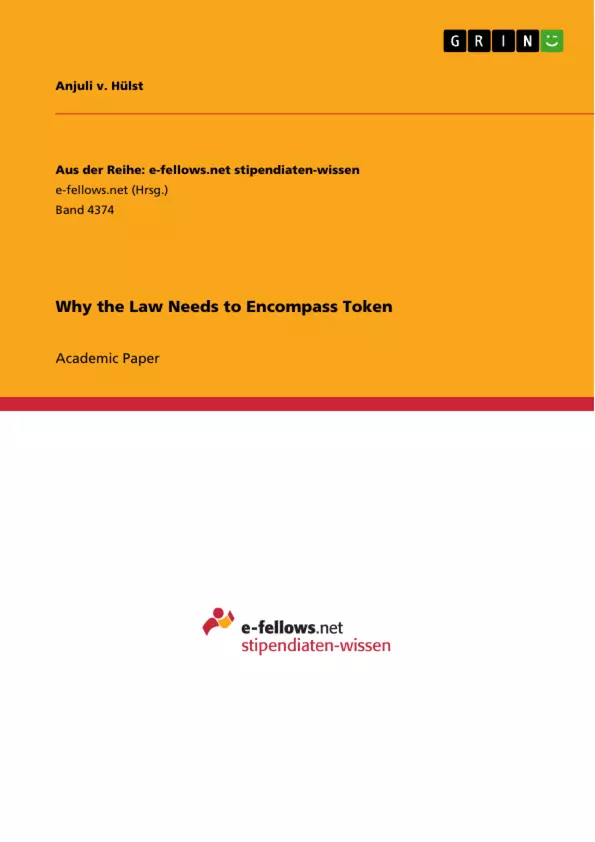This paper examines the question of whether and why distributed ledger token should be legally encompassed. To ensure a fundamental understanding, it first describes the basic features of the distributed ledger technology and the main characteristics of token. This is followed by a look at the function of law in general as well as with regard to property and technology in particular. From these considerations, the necessity of recognizing token as legal goods is derived, coming to the concluding section where it will be addressed whether property law can be used to encompass token. Though not evaluating any specific application of norms, the paper argues for a corresponding openness in legal interpretation, especially when it comes to disruptive technologies.
Inhaltsverzeichnis (Table of Contents)
- Technical features of DLT
- P2P networks and consensus reaching
- Hashing
- Asymmetric cryptography
- Token
- Function of law
- Private property
- Token as legal goods
- Disruptive technologies
Zielsetzung und Themenschwerpunkte (Objectives and Key Themes)
This paper examines the question of whether and why distributed ledger tokens should be legally encompassed. It analyzes the basic features of DLT and tokens, the function of law in general, and private law in particular. Through these considerations, the necessity of recognizing tokens as legal goods is derived. The paper concludes by exploring whether property law can be used to encompass tokens and argues for an open approach to legal interpretation, especially when dealing with disruptive technologies.
- The need to legally encompass distributed ledger tokens
- The function of law in relation to property and technology
- The characteristics of DLT and tokens
- The role of private law in regulating the token economy
- The importance of open legal interpretation for disruptive technologies
Zusammenfassung der Kapitel (Chapter Summaries)
- Technical features of DLT: This chapter provides a technical overview of DLT, outlining its key components: P2P networks, consensus mechanisms, hashing, and asymmetric cryptography. It also explains how these concepts converge in Bitcoin and how they contribute to the unique properties of DLT. The concept of tokens is introduced as the units within DLT.
- Function of law: This chapter examines the general function of law, highlighting its role in regulating societal interactions and establishing order. It explores how law operates in relation to property rights and technology, and how it adapts to new developments.
- Private property: This chapter specifically examines the principles of private property law, emphasizing its focus on individual ownership, control, and transfer of assets. It analyzes how private property law has evolved to accommodate new forms of assets and how it might apply to tokens.
- Token as legal goods: This chapter investigates the legal recognition of tokens, considering whether and how they can be classified as legal goods. It explores the potential of existing legal frameworks to encompass tokens and the challenges of defining their legal status.
Schlüsselwörter (Keywords)
The key topics addressed in this paper include distributed ledger technology, tokens, legal recognition, property law, disruptive technologies, open legal interpretation, and the token economy. The paper explores the legal implications of DLT and its impact on existing legal frameworks, with particular attention to the potential classification of tokens as legal goods.
- Quote paper
- Anjuli v. Hülst (Author), 2021, Why the Law Needs to Encompass Token, Munich, GRIN Verlag, https://www.hausarbeiten.de/document/1451460


